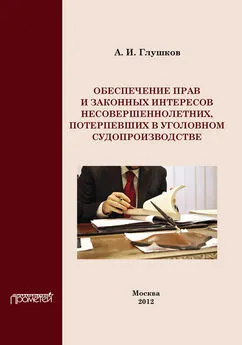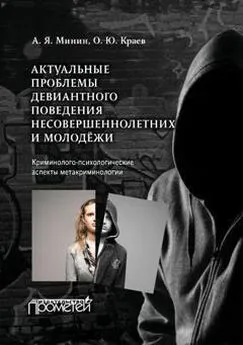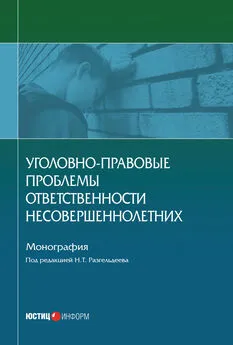Judith Levine - Вредно для несовершеннолетних
- Название:Вредно для несовершеннолетних
- Автор:
- Жанр:
- Издательство:неизвестно
- Год:неизвестен
- ISBN:нет данных
- Рейтинг:
- Избранное:Добавить в избранное
-
Отзывы:
-
Ваша оценка:
Judith Levine - Вредно для несовершеннолетних краткое содержание
Вредно для несовершеннолетних - читать онлайн бесплатно полную версию (весь текст целиком)
Интервал:
Закладка:
35. "To Attack the Problems of Adolescent Sexuality."
36. A few years earlier, the Family Protection Act (H.R. 7955), a blueprint of the Right's agenda to come and also cosponsored by Hatch, proposed defunding all state protections of children and women independent of their fathers and husbands, including child-abuse and domestic-abuse programs. It did not pass.
37. Bernard Weinraub, "Reagan Aide Backs Birth-Aid Education," New York Times , June 24, 1981, C12.
38. A SIECUS-Advocates for Children Survey in 1999 found that 70 percent opposed the federal abstinence-only standards and thought they were unrealistic in light of kids' actual sexual behavior. SIECUS, SHOP Talk Bulletin 4 (June 11, 1999).
39. "State Sexuality and HIV/STD Education Regulations," National Abortion Rights Action League fact sheet, February 1997.
40. "Sex Education That Teaches Abstinence "Wins Support," Associated Press, New York Times , July 23, 1997.
41. "Between the Lines: States' Implementation of the Federal Government's Section 510(b) Abstinence Education Program in Fiscal Year 1998," SIECUS report, Washington, D.C., 1999.
42. Six in ten believe that sexual intercourse in the teen years was always wrong, and nine out of ten wanted their kids to be taught about abstinence at school. Yet eight in ten also wanted them to learn about contraception and preventing sexually transmitted diseases. SIECUS, SHOP Talk Bulletin 4 (June 11, 1999).
43. "Adolescent Sexual Health in Europe and the U.S.—Why the Difference?" 2d ed., Advocates for Youth report, Washington, D.C., 2000.
44. Douglas Kirby, "No Easy Answers: Research Findings on Programs to Reduce Teen Pregnancy," National Campaign to Prevent Teen Pregnancy report, Washington, D.C., 1997.
45. Marl W. Roosa and F. Scott Christopher, "An Evaluation of an Abstinence-Only Adolescent Pregnancy Prevention Program: Is 'Just Say No' Enough?" Family Relations 39 (January 1990): 68-72.
46. John B. Jemmott III, Loretta Sweet Jemmott, and Geoffrey T. Fong, "Abstinence and Safer Sex: HIV Risk-Reduction Interventions for African American Adolescents," Journal of the American Medical Association 279, no. 19 (May 20, 1998): 1529-36.
47. Ralph J. DiClemente, Editorial: "Preventing Sexually Transmitted Infections among Adolescents," Journal of the American Medical Association 279, no. 19 (May 20, 1998).
48. National Institutes of Health Consensus Development Conference Statement, Interventions to Prevent HIV Risk Behaviors , February 11-13, 1997 (Bethesda, Md.: NIH), 15.
49. Ron Haskins and Carol Statuto Bevan, "Implementing the Abstinence Education Provision of the Welfare Reform Legislation," U.S. House of Representatives memo, November 8, 1996, 1.
50. Haskins and Bevan, "Implementing the Abstinence Education Provision," 8-9.
51. "Changes in Sexuality Education from 1988-1999."
52. Victor Strasburger, Getting Your Kids to Say "No" in the '90s When You Said "Yes" in the '60s (New York: Simon and Schuster, 1993), 87-88.
53. Sol Gordon and Judith Gordon, Raising a Child Conservatively in a Sexually Permissive World (New York: Simon and Schuster, 1989), 101.
54. Peter C. Scales and Martha R. Roper, "Challenges to Sexuality Education in the Schools," in The Sexuality Education Challenge: Promoting Healthy Sexuality in Young People , ed. Judy C. Drolet and Kay Clark (Santa Cruz, Calif.: ETR Associates, 1994), 79.
55. Colleen Kelly Mast, Sex Respect: Parent-Teacher Guide (Bradley, 111.: Respect Inc., n.d.), 45.
56. Other educators have pointed out the implicit inaccuracy of the impression these slides leave: unfortunately, one of the most common STDs, chlamydia, is asymptomatic.
57. Teaching Fear , 8.
58. Medical Institute for Sexual Health, National Guidelines for Sexuality and Character Education (Austin, Tex.: Medical Institute for Sexual Health, 1996), 82.
59. Saint Augustine, Confessions (Oxford: Oxford University Press, 1991), 24-25.
60. Medical Institute for Sexual Health, "National Guidelines," 89.
61. "HIV: You Can Live without It!" (Spokane, Wash.: Teen-Aid, Inc., 1998), 33.
62. Margaret Atwood, The Handmaid's Tale (New York: Houghton Mifflin, 1986), 24.
63. Scales and Roper, "Challenges to Sexuality Education," 70.
64. Irving R. Dickman, Winning the Battle for Sex Education , pamphlet (New York: SIECUS, 1982); Debra Haffner and Diane de Mauro, Winning the Battle: Developing Support for Sexuality and HIV/AIDS Education , pamphlet (New York: SIECUS, 1991); Teaching Fear .
65. The ad ran in the New York Times , April 22, 1997, the Los Angeles Times , April 28, 1997, as well as the West Coast editions of Time , Newsweek , and People during that month.
66. "Trends in Sexual Risk Behaviors among High School Students—U.S. 1991-97," Morbidity and Mortality Weekly Report 47 (September 18, 1998): 749-52. Teens may be doing better than adults. "Most Adults in the United States Who Have Multiple Sexual Partners Do Not Use Condoms Consistently," Family Planning Perspectives 26 (January/February 1994): 42-43.
67. Susheela Singh and Jacqueline E. Darroch, "Adolescent Pregnancy and Childbearing: Levels and Trends in the Developed Countries," Family Planning Perspectives 32 (2000): 14-23. The government recorded the lowest number of teen pregnancies in 1997: 94.3 per thousand women ages fifteen to nineteen, a drop of 19 percent since 1991. Most of those pregnancies are among eighteen- and nineteen-year-old women. In 1999, the U.S. teen birth rate hit its lowest level since recording began in 1940. Of every thousand teenage women, 4.96 gave birth. Centers for Disease Control and Prevention National Center for Health Statistics, National Vital Statistics Report 4, no. 4 (2001).
68. About three-quarters of girls use a method the first time; as many as two-thirds of teens say they use condoms regularly—three times the rate in 1970. Long-acting birth control injections and implants have also gained popularity among teens. "Why Is Teenage Pregnancy Declining? The Roles of Abstinence, Sexual Activity and Contraceptive Use," Alan Guttmacher Institute Occasional Report, 1999. The National Campaign to Prevent Teen Pregnancy asked teens themselves the main reason they thought teen pregnancies had dropped in the last decade. Of 1,002 youths surveyed, 37.9 percent named worry about AIDS and other STDs; 24 percent credited a greater availability of birth control; and 14.9 percent said the decline was due to more attention to the issue. Only 5.2 percent named "changing morals and values," and 3.7 percent said, "Fewer teens have sex." With One Voice: American Adults and Teens Sound Off about Teen Pregnancy (Washington, D.C.: National Campaign to Prevent Teen Pregnancy, 2001).
69. Singh and Darroch, "Adolescent Pregnancy and Childbearing."
70. "Teen Pregnancy 'Virtually Eliminated' in the Netherlands," Reuters Health/London news story (accessed through Medscape), March 2, 2001.
71. "United States and the Russian Federation Lead the Developed World in Teenage Pregnancy Rates," Alan Guttmacher Institute press release, February 24, 2000.
72. J. Mauldon and K. Luker, "The Effects of Contraceptive Education on Method Use at First Intercourse," Family Planning Perspectives (January/February 1996): 19.
73. J. C. Abma et al., "Fertility, Family Planning, and Women's Health: New Data from the 1995 National Survey of Family Growth," Vital Health Statistics 23, no. 19 (1997).
74. Peggy Brick et al., The New Positive Images: Teaching Abstinence, Contraception and Sexual Health (Hackensack, N.J.: Planned Parenthood of Greater Northern New Jersey, 1996), 31.
75. Peter Bearman, paper presented at Planned Parenthood New York City's conference Adolescent Sexual Health: New Data and Implications for Services and Programs, October 26, 1998; Diana Jean Schemo, "Virginity Pledges by Teenagers Can Be Highly Effective, Federal Study Finds," New York Times , January 4, 2001.
76. Lantier, "Do Abstinence Lessons Lessen Sex?"
77. "Trends in Sexual Risk Behaviors among High School Students—United States 1991-1997," Morbidity and Mortality Weekly Reports 47 (September 18, 1998): 749-52.
78. Abma et al., "Fertility, Family Planning, and Women's Health."
79. It is important to point out that, in spite of these declines, nearly two-thirds of teen births resulted from unintended pregnancies. Abma et al., "Fertility, Family Planning, and Women's Health."
80. "Adolescent Sexual Health in the U.S. and Europe—Why the Difference?" Advocates for Youth fact sheet, Washington, D.C., 2000.
81. Schemo, "Virginity Pledges by Teenagers."
82. It is impossible to find a forthright statement that abstinence-plus education meaningfully delays teen sexual intercourse. Its evaluators have been able to find out only that, for instance, if you want to delay intercourse, you should start classes before kids start "experimenting with sexual behaviors." And all studies show that sex ed does not encourage earlier intercourse. J. J. Frost and J. D. Forrest, "Understanding the Impact of Effective Teenage Pregnancy Prevention Programs," Family Planning Perspectives 27 (1995): 188-96; D. Kirby et al., "School Based Programs to Reduce Sexual Risk Behaviors: A Review of Effectiveness," Public Health Reports 190 (1997): 339-60; A. Grunseit and S. Kippax, Effects of Sex Education on Young People's Sexual Behavior (Geneva: World Health Organization, 1993).
83. S. Zabin and M. B. Hirsch, Evaluation of Pregnancy Prevention Programs in the School Context (Lexington, Mass.: D.C. Heath/Lexington Books, 1988); Institute of Medicine, The Best Intentions: Unintended Pregnancy and Well-Being of Children and Families (Washington, D.C.: National Academy Press, 1995).
6. Compulsory Motherhood
1. This law, the first gate to open in the gradual spilling away of federally protected abortion rights, was reauthorized in every subsequent Congress; its constitutionality was upheld three times. In 1993, after a long battle, it was "liberalized" to add exceptions for rape and incest. But while the government paid for a third of abortions from 1973 to 1977, it now pays for almost none. Marlene Gerber Fried, "Abortion in the U.S.: Barriers to Access," Reproductive Health Matters 9 (May 1997): 37-45.
2. Ellen Frankfort and Frances Kissling, Rosie: Investigation of a Wrongful Death (New York: Dial Press, 1979).
3. "Who Decides? A State-by-State Review of Abortion and Reproductive Rights," 10th ed., National Abortion Rights Action League report, Washington, D.C, 2001.
4. By the 1990s, more than 80 percent of clinics were regularly picketed by anti-abortion activists. Ann Cronin, "Abortion: The Rate vs. the Debate," New York Times , February 25, 1997, "Week in Review," 4.
5. The agency reported at least fifteen bombings and arson attacks at clinics each year from 1993 through 1995, seven in 1996, and one in Atlanta in 1997 that injured six people. Rick Bragg, "Abortion Clinic Hit by 2 Bombs; Six Are Injured," New York Times , January 17, 1997.
6. Jim Yardley and David Rohde, "Abortion Doctor in Buffalo Slain; Sniper Attack Fits Violent Pattern," New York Times , October 25, 1998, A1.
7. Alan Guttmacher Institute, "Into a New World: Young Women's Sexual and Reproductive Lives," Executive Summary (New York: the institute, 1988).
8. Women ages eighteen to twenty-four are about twice as likely to have abortions as women in the general population. Stanley K. Henshaw and Kathryn Kost, "Abortion Patients in 1994-1995: Characteristics and Contraceptive Use," Family Planning Perspectives 28 (1996): 140-47, 158.
Читать дальшеИнтервал:
Закладка:










